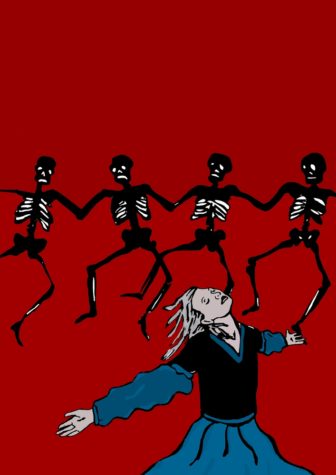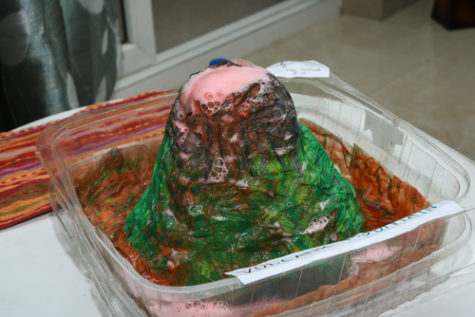 I remember my 7th grade science fair project pretty clearly. You may think you aren’t interested in what it was, but you should be—because it was fabulous. It was truly unique. I didn’t grow plants under different colored lights and I didn’t build a lame volcano using paper maché and some sticky baking soda and Sprite mixture (or whatever). I’m talking actual, useful science. I’m talking intelligent and intriguing experiment with totally cool results—physical results you could hold in your hand.
I remember my 7th grade science fair project pretty clearly. You may think you aren’t interested in what it was, but you should be—because it was fabulous. It was truly unique. I didn’t grow plants under different colored lights and I didn’t build a lame volcano using paper maché and some sticky baking soda and Sprite mixture (or whatever). I’m talking actual, useful science. I’m talking intelligent and intriguing experiment with totally cool results—physical results you could hold in your hand.
For my 7th grade project, I grew bone.
The stuff of Halloween’s dancing skeletons and archaeologists’ dreams. The stuff that holds us upright and crumbles as we age. The hardened-mineral substance that makes us whole. I made some.
It was rabbit bone, but that still counts.
Before I go on, lest you assume this was my genius idea, I have to give credit to the actual project leader. My step-dad Mark was doing orthopedic research at the National Institutes of Health at the time. He was studying fracture repair, so he needed to understand and hopefully control how bone grows. He wanted to look at particular proteins that might drive the growth and healing process.
I was fascinated by the idea that one could create a bit of skeleton where there wasn’t any before. I wanted to try it.
But full disclosure: As intrigued as I was about creating bone, I was most excited about the rabbits. Because, well, animals. Animals were, and still are, my thing. And this project meant lots of access to those pure-white-furred red-eyed bunnies kept in rows of cages in the lab. (More on this in Part II, this Friday.)
Never mind that these animals were doomed, bred for medical experiments and at some point sacrifice. Back then I didn’t have much to say about the moral questions surrounding lab animals. All I knew was, as the step-daughter of a researcher, I got to befriend and hold some of them before they made their final contribution to medical science. Mice and rats and rabbits were a necessary part of scientific study, as far as I could tell.
My feelings about that have changed a bit, but at the time, there it was. Mark’s work was important. It could help people, like all the grandmas out there who fall and break a hip. Trading a mouse (no matter how cute) for a grandma (no matter how grouchy) seemed right to me back then. (I’m so glad some animal models are falling out of favor these days. But that’s a topic for another time.)
So, to start, here’s the natural process of fracture healing. First, someone yells, ‘Hey guys, watch this!’ before falling off a tall structure and breaking an arm. Soon the immune system rushes osteoclasts to the injured site to clean up any debris from the fracture. Then a layer of cartilage called a callus forms around the break and calcifies to keep the bony ends from moving around. (Without that support, the break would hurt a whole lot more.)
Finally, osteoblasts, the bone-forming cells, replace that cartilage with true bone, eventually reforming into the shape of the original. Voila.
Fractures normally heal pretty well, but there are patients in whom bone growth is slow or otherwise problematic—such as diabetics. Mark’s project aimed to make a model that would allow scientists to study the process of bone formation, ultimately to help improve the process in these patients. Importantly, he wanted to be able to grow bone where it didn’t normally pop up, a “de novo” site, so there was no mixing up new bone and old.
There was already evidence that something called decalcified bone matrix would spur bone growth. So we started out by making some. All that meant was taking a small sample of bone from a rabbit, grinding it down into powder, and extracting the calcium using hydrochloric acid.
But Mark also wanted to test the idea that a class of proteins called TGF-betas were the actors in this bone-building show. Specifically, he was looking at “bone-morphogenic proteins” (BMPs) within that class. So, the plan was to grow bone with and without BMPs and see what changed, if anything.
For the first surgery, I got to suit up and scrub in. And there I was, animal lover extraordinaire, in too-large green scrubs with my hand on Mark’s as he slid the scalpel gently through the sleeping rabbit’s skin. We placed the matrix just under the epidermal layer and I helped stitch the opening back up. (I had practiced putting sutures through a grapefruit skin beforehand, as I’d watched Mark do nightly, during medical school, at our kitchen table.)
Within about seven days, Mark took a sample and found that cartilage had formed at the site. And after some 12 days we were back in the lab together, the rabbit once again asleep under our hands. The second surgery revealed a little knuckle of true bone where we’d implanted the matrix.
Mark explained this was a type of growth called endochondral bone formation, which is the same process that lets kids get taller. (The bones grow at their ends, at the growth plates.) We carefully removed my prize and put the bunny back together once again.
That was where my project ended. Growing bone was good enough for a 7th grade science fair. But Mark went on to add BMPs to another batch of demineralized matrix and do another implant. This time he got a lot more cartilage. It didn’t appear faster, but there was more of it. Which meant, in the end, there was more bone. It was the first set of experiments showing that TGF-betas can stimulate speedier bone growth in animals.
(There was also a third part of the study–which showed that the whole process slowed down in a diabetic model. Just FYI.)
For a teenager who might whine over a paper cut, I handled the whole thing pretty well. I wish I still had the photos to prove my participation, but this was before digital cameras, and who the heck knows where those fading prints might be stashed. In my corner at the science fair, I hung pictures of the still-living rabbit (just to show it was okay) and the surgery itself, plus a neatly typed explanation of the project, and I proudly placed the hunk of bone on a little stage at the center of the display. I almost felt bad for my fellow students with their droopy plants and drooling volcanoes.

Fixing broken humans is big science these days, and researchers are finding ways to use our incredibly versatile stem cells to speed up body-building processes. We’re getting closer to being able to replace broken or lost parts (not just bone but organs, too) by guiding our own cells to rebuild atop perfect matrices, thanks to work like Mark’s in the ’80s and earlier. We’re beginning to apply the knowledge in stunning ways.
And with today’s biotech advances, 3-D printers are getting good at spitting out layers of bone (or kidneys or ears or other parts), one atop the next, to the exact proportions needed. We’ve come a hell of a long way since researchers grew an ear on the back of a mouse.
But as your otherwise average teenager in the ’80s—listening to Journey and flipping back my hair Farrah Fawcett style and wearing Izod shirts and rolled-up jeans—I like think I was kind of advanced in one area, standing at the cutting edge of middle-school science, with “my” bone-growing project.
And this goes without saying, but I’ll say it anyway because it still feels so good: I won first place.
(Stay tuned for Part II: The Lab Rabbit’s Revenge.)
Photos: Shutterstock
🙂 OK, sure was better than mine! Pretty darn cool for a 7th grader.
>> So, to start, here’s the natural process of fracture healing. First, someone yells, ‘Hey guys, watch this!’ <<
I laughed so hard. Well done!
By the way, if you ever find those old pics, don't just scan them yourself. Some of the scan houses out there do fancy color correction based on the age of the print and the differential rates at which the various chemicals used in the developing process degrade over time. You can get some pretty stunning results back.
I really enjoyed your essay! I have always been suspicious of science fairs. Kids just don’t do science the way that science fairs want you to do them.
Kids like science which starts “Hey guys (or gals), watch this!” And if it is a boy, it usually involves breaking something or really grossing out a girl.
I am afraid that is not what science fairs are about these days. Here are more typical (real) titles from the Intel science competition in 2016:
“Putative High-pIC50 SpDHBP Synthase Inhibitors Against Multi-Drug Resistant S. pneumoniae”
or my favorite:
“Accelerating Cancer Immunotherapy: Optimization of an EGFRvIII-based Cancer Vaccine via Computationally-Aided Analysis of Proteasome Processing for Improved Glioblastoma Prognosis.”
Kids are natural scientists and like to do experiments. Like throwing the cat in the neighbor’s swimming pool and seeing what happens. Not that I would have ever consider doing this, but what happens is twofold: (1) it is likely that the cat cannot get out of the pool by itself so you have to pick up a wet and totally pissed off cat with claws from the pool , and (2) the family cat will avoid you for weeks.
But the Intel winners are not kid science. When have you ever heard a kid say “Instead of throwing the cat in the pool, what if we see if multi-drug resistant S. pneumoniae is affected by putative high-pIC50 SpDHBP synthase inhibitors?”
Nah, we did that last week.
I have been a judge at some science fairs, and I can tell you that I would never give a prize to some 15 year old who claims to have done Optimization of an EGFRvIII-based Cancer Vaccine via Computationally-Aided Analysis of Proteasome Processing for Improved Glioblastoma Prognosis. Rather, I would be more likely to believe a kid science project entitled “Is there any difference in what happens when you throw a black cat or a white cat into the neighbor’s pool?”
In fact, I can add black cat data to the study.
By the time your through with you now voluminous projects, you will find the way to hatch humans without needing the childbirth process.